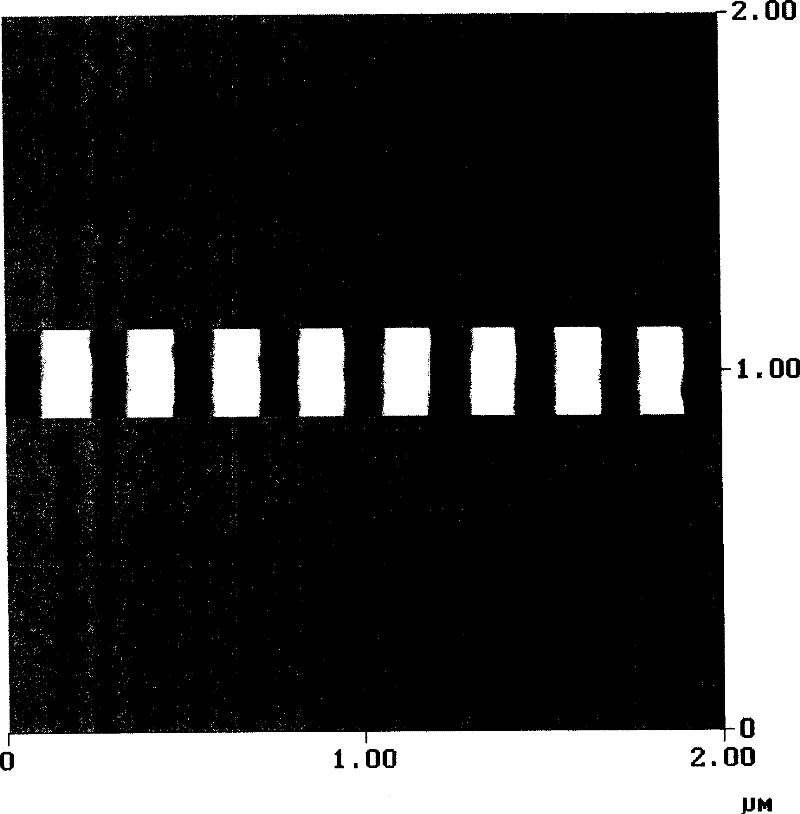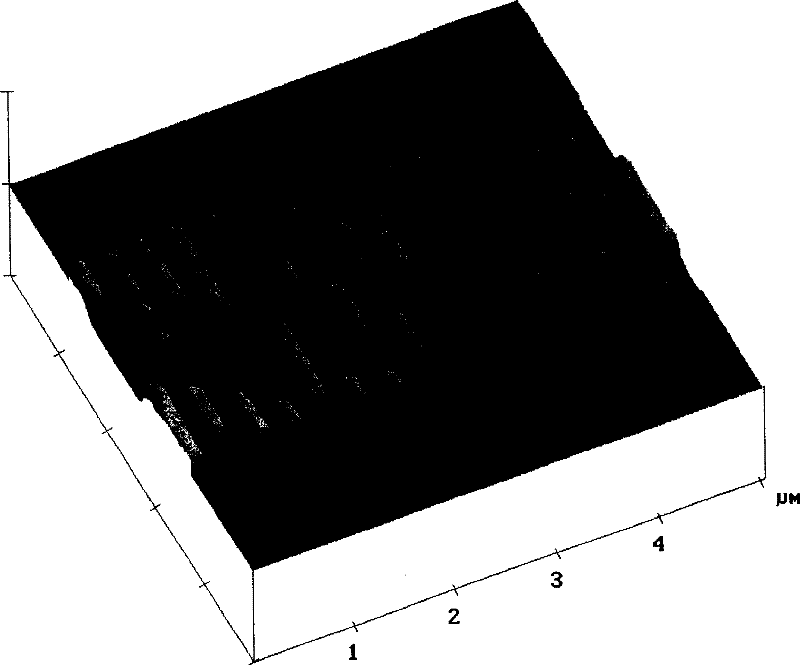Pressure impression die comprising cycloolefin copolymer
A cyclic olefin copolymer, a technique for stamping, applied in the process of processing and utilizing such a polymer stamp, a two-step process for making and using such a polymer stamp, the field of polymer stamping of the stamping process, It can solve the problems of non-reusability, difficult template demoulding, and reducing the fidelity of copies.
- Summary
- Abstract
- Description
- Claims
- Application Information
AI Technical Summary
Problems solved by technology
Method used
Image
Examples
Embodiment 1
[0120] A nickel template with a line pattern of 80 nm line width and 90 nm height on the surface was imprinted into Zeonor ZF14 at 150° C. and 50 bar for 3 minutes. The Ni surface is pretreated with a fluorinated SAM anti-stick layer to obtain a low surface tension below 20mN / m, preferably below 18mN / m. The Zeonor foil is mechanically removed from the stencil surface without damaging either the pattern of the stencil or the replica. Zeonor foil was used as a new template, which was imprinted into a 100 nm thick SU8 film. The SU8 film was spin-coated onto a 20nm LOR film previously spin-coated onto a silicon substrate, and to improve the anti-sticking properties between the SU8 film and the Zeonor foil, none of the surfaces were treated with an additional coating. Imprinting was performed at 70° C. and 50 bar for 3 minutes. The SU8 film was exposed to UV light for 4 seconds through an optically clear Zeonor foil and baked for 2 more minutes. Throughout the imprinting process...
Embodiment 2
[0122] Using the same method and the same parameters as already described in Example 1, a nickel template (developed by AFM) with a BluRay pattern on the surface with a structure height of 100 nm and a width of 150 nm was imprinted into Zeonor ZF14. Zeonor foil was used as a new template, which was imprinted into a 100 nm thick SU8 film. Again, the same method and the same parameters as already described in Example 1 were used here. AFM images of imprints obtained in SU8 thin films deposited on silicon wafers in image 3 shown in .
Embodiment 3
[0124] A nickel template with a surface comprising a micron pattern of high aspect ratio in the range of 1-28 was used. Feature sizes range from 600nm-12μm with a height of 17μm. Prior to embossing, the surface is covered with a phosphate-based anti-adhesive film. The nickel template was imprinted into polycarbonate foil at 190°C and 50 bar for 3 minutes. To improve the anti-sticking properties between the Ni template and the polycarbonate film, the surface of the polycarbonate foil was treated with an additional coating. The release temperature is 130°C at which the polycarbonate foil can be mechanically removed from the nickel surface without damaging either the pattern of the template or the replica. A polycarbonate foil was used as a new template to emboss the Topes foil. Imprinting was carried out at a temperature of 120° C. and a pressure of 50 bar for 3 minutes. None of the surfaces were treated with an additional coating in order to improve the anti-stick propertie...
PUM
| Property | Measurement | Unit |
|---|---|---|
| surface tension | aaaaa | aaaaa |
| surface tension | aaaaa | aaaaa |
| surface tension | aaaaa | aaaaa |
Abstract
Description
Claims
Application Information
 Login to View More
Login to View More - R&D
- Intellectual Property
- Life Sciences
- Materials
- Tech Scout
- Unparalleled Data Quality
- Higher Quality Content
- 60% Fewer Hallucinations
Browse by: Latest US Patents, China's latest patents, Technical Efficacy Thesaurus, Application Domain, Technology Topic, Popular Technical Reports.
© 2025 PatSnap. All rights reserved.Legal|Privacy policy|Modern Slavery Act Transparency Statement|Sitemap|About US| Contact US: help@patsnap.com



